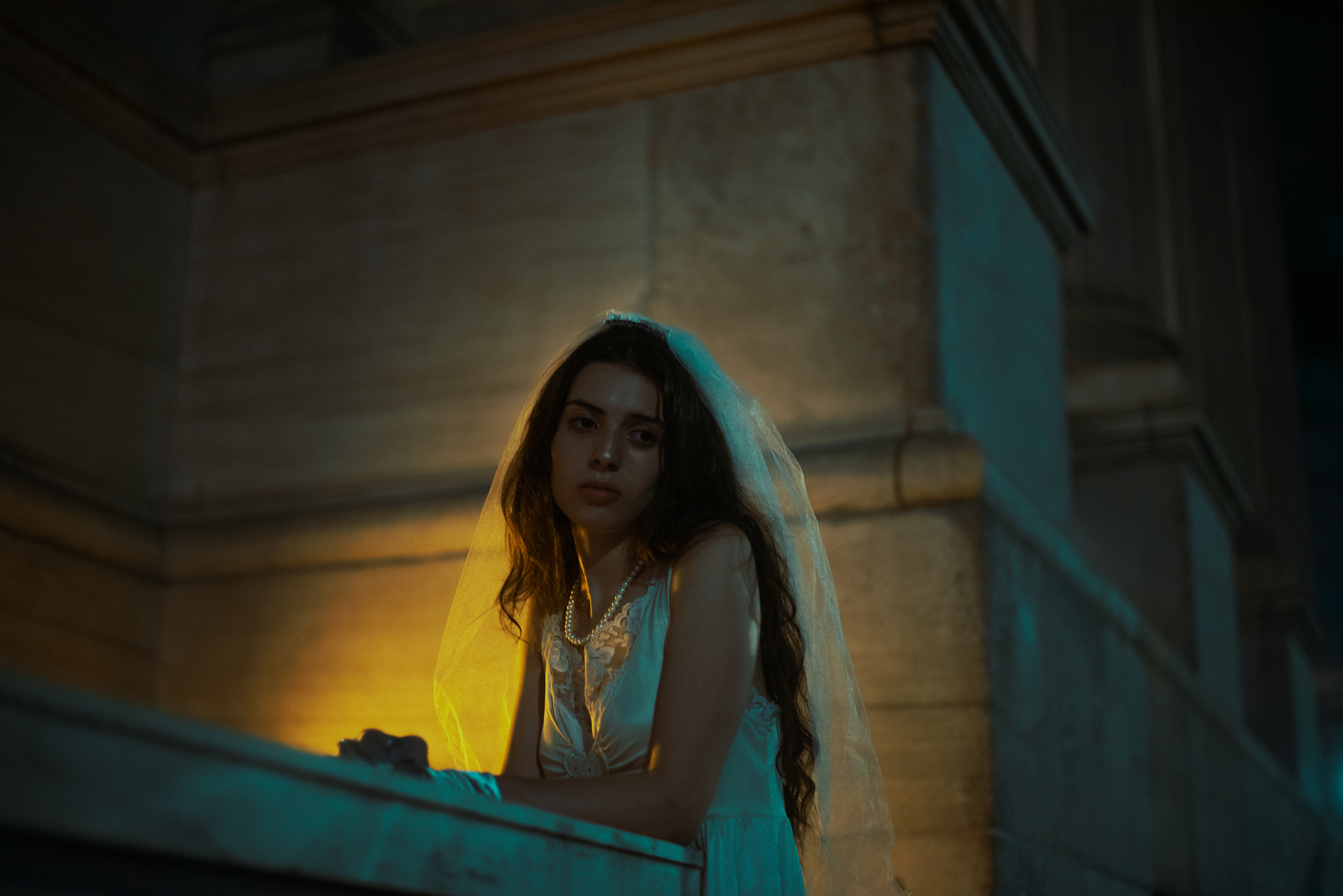I've grown up within the intersections of cultures and norms that often speak in binary terms—defining roles, dictating pathways, and creating narratives about happiness and fulfillment. This series is my exploration and deconstruction of the "happily ever after" myth that many of us are encouraged to pursue, even when it doesn’t fit our realities.
Using familiar symbols of weddings—a giant, fabric wedding cake, bloodstained suits, veils, and floral arrangements—I aim to subvert the traditional narratives surrounding love and union. The figures in these images are often alone, isolated, and caught in moments of introspection rather than joy. This solitude is intentional; it reflects the alienation that can come from trying to conform to societal expectations, especially when those expectations do not resonate with one's authentic self.
The fabric I use, which flows and drapes around each scene, serves as a metaphor for fluidity. It allows for bending, reshaping, and redefining, much like identity itself. In my work, fabric is not fixed; it transforms, encases, and reveals, resisting the rigidity of tradition. The empty suit, held by a solitary bride, or the oversized cake made of silk, challenges the solidity of societal roles, suggesting that these conventions, while imposing, are ultimately fragile and malleable.
Through this series, I seek to reclaim the "happily ever after" as something deeply personal and self-defined. I envision happiness not as an endpoint dictated by tradition, but as a fluid journey of self-discovery and acceptance. These images are my way of questioning the roles we inherit and the paths we feel compelled to follow, creating space for new narratives that celebrate autonomy, complexity, and the beauty of choosing our own version of joy.
– Tommy L. Tran




















